Quick Answer: To buy and fit a pool cover and roller, do the following:
- Choose the Right Pool Cover – Consider solar, thermal, or debris covers based on your needs.
- Measure Your Pool – Ensure the cover fits snugly over the water surface.
- Select a Pool Roller – Pick a roller that suits your pool size for easy handling.
- Installation – Cut the cover to fit, attach it to the roller, and secure it properly.
- Maintenance – Keep it clean, store it correctly when not in use, and check for wear.
How to Buy & Fit a Pool Cover and Roller: Ultimate Guide
Why You Need a Pool Cover and Roller
Investing in covers for pools is one of the smartest decisions a pool owner can make. Pool covers serve multiple purposes: they reduce water evaporation, retain heat, keep leaves and debris out, minimise chemical use, and improve safety. Adding a pool roller simplifies the process of removing and reapplying your cover, saving time and effort.
Without a pool cover, you're likely to spend more on heating, water top-ups, and cleaning. Moreover, certain covers like pool safety covers offer vital protection for families with children or pets, providing peace of mind that accidental falls into the pool are prevented.
Types of Pool Covers
Pool covers come in various types, each designed for a specific purpose, whether it's conserving heat, keeping debris out, or enhancing pool safety. Choosing the right cover depends on factors such as climate, pool usage, and maintenance preferences.
1. Solar Pool Covers
Solar pool covers, also known as bubble covers, are designed to trap heat from the sun and reduce evaporation. Made from UV-resistant plastic, they have air pockets that act like a magnifying glass, transferring heat into the pool water. These covers can increase water temperature by up to 8°C and significantly reduce water loss by up to 90%, making them ideal for warmer climates. However, they do not offer safety benefits and are primarily used for energy efficiency and water conservation.
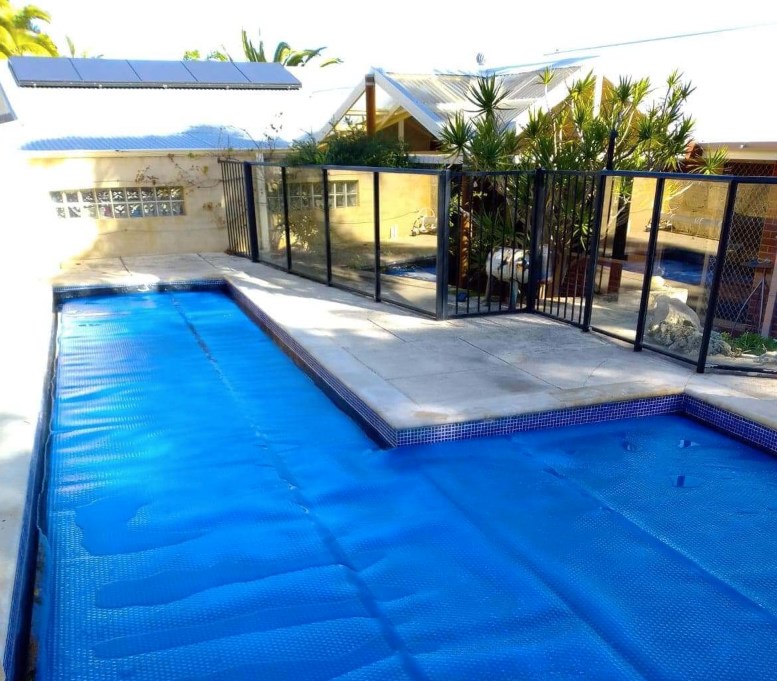
2. Thermal Pool Covers
Thermal pool covers, also called heat retention covers, are thicker and more insulated than solar covers. They are made from closed-cell foam material, which prevents heat from escaping overnight, making them an excellent choice for heated pools or cooler climates. Unlike solar covers, they do not rely on sunlight but instead minimise heat loss by providing a strong insulating layer. They are also more durable and long-lasting than standard solar covers.
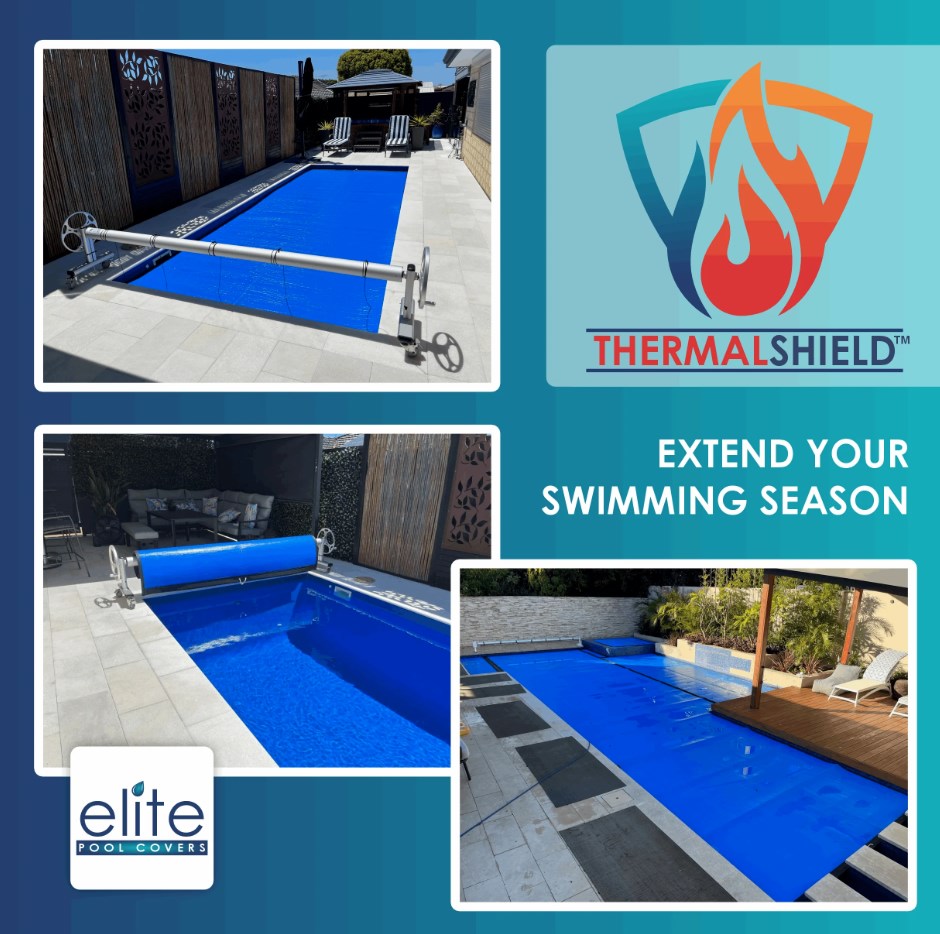
3. Winter Pool Covers
Winter pool covers are heavy-duty covers designed to protect the pool during the off-season. Made from reinforced PVC or mesh, these covers block debris, prevent algae growth by limiting sunlight, and reduce water evaporation. Some winter covers are designed to support weight, ensuring safety by preventing pets or small children from accidentally falling in. While they are excellent for seasonal maintenance, they are not designed for daily use like solar or thermal covers.
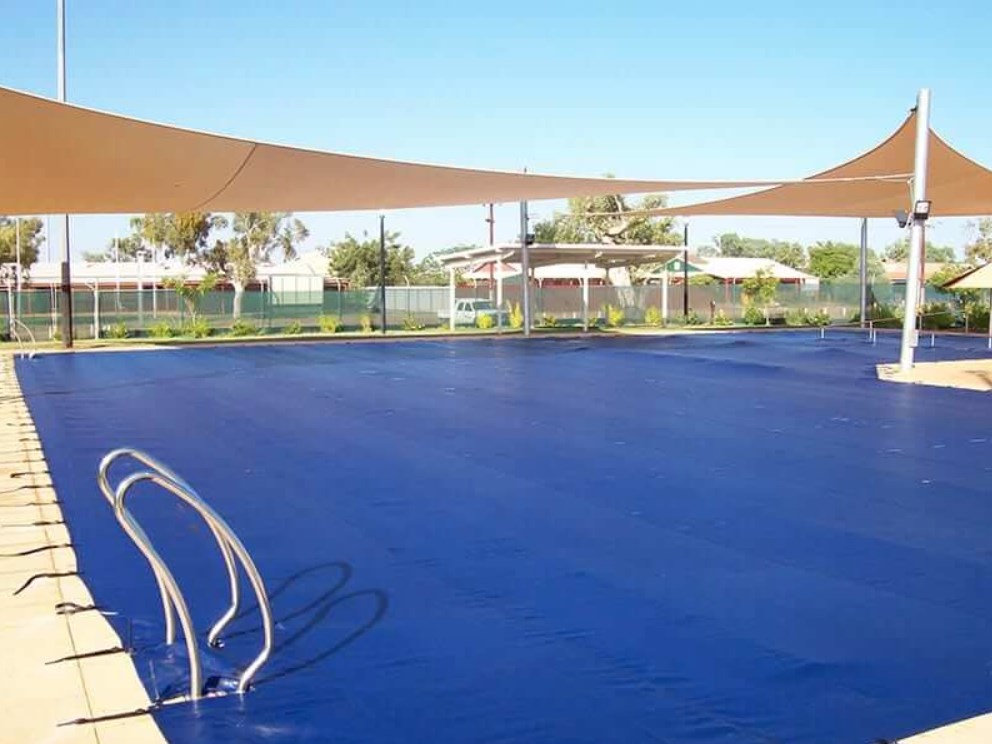
4. Automatic Pool Covers
Automatic pool covers provide the ultimate convenience by allowing pool owners to cover or uncover the pool with the push of a button. These covers are made from strong vinyl or reinforced fabric and are installed on a track system that extends and retracts automatically. They offer security, insulation, and debris protection, making them an all-in-one solution. However, they require professional installation and are among the most expensive pool cover options.
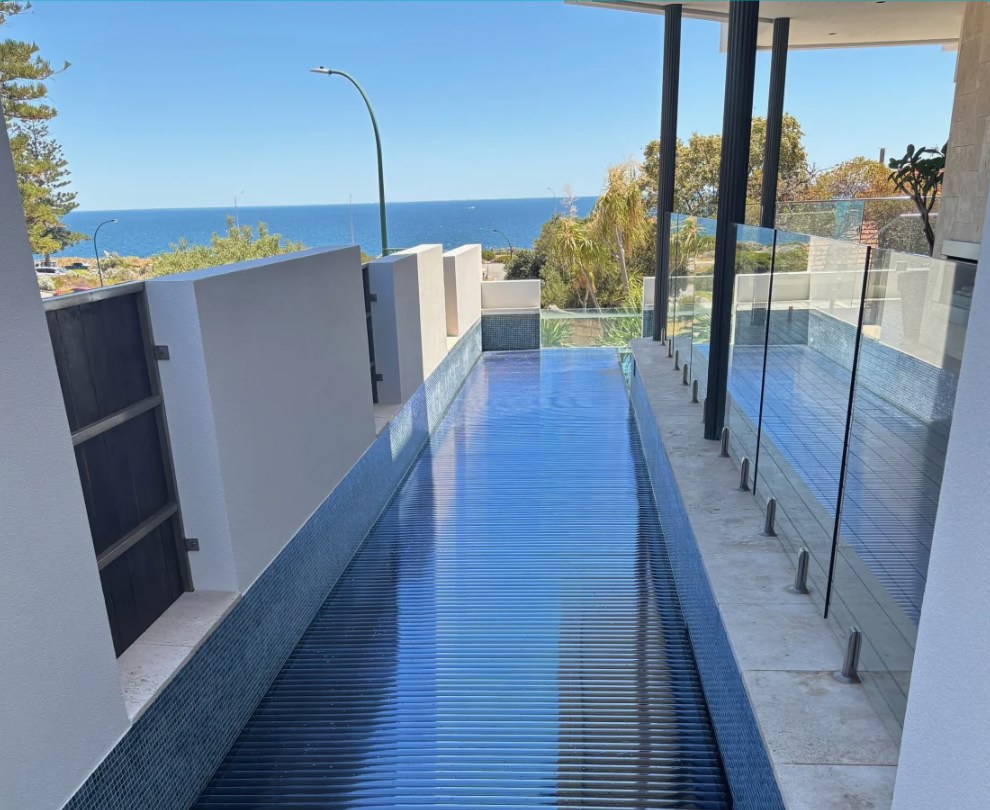
5. Safety Pool Covers
Safety pool covers are built specifically to prevent accidental falls into the pool, making them ideal for households with children or pets. They are made from reinforced mesh or solid vinyl and are anchored to the pool deck for stability. Unlike regular covers, these can support a person’s weight and comply with safety standards. While they provide excellent protection, they require manual securing and removal, making them less convenient for daily use.
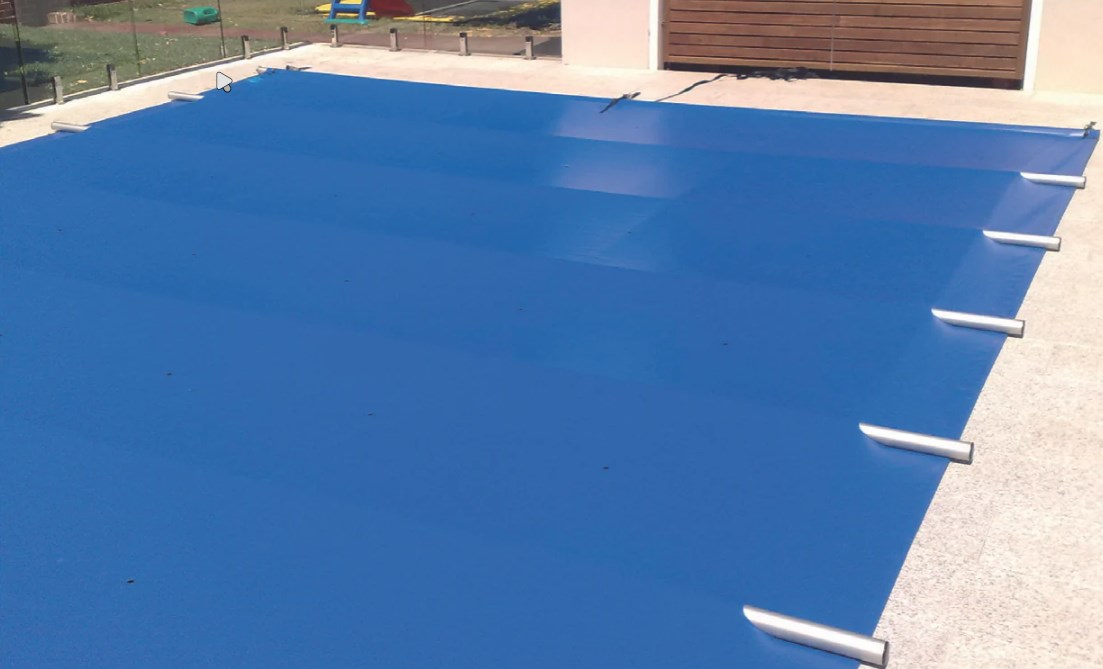
6. Leaf & Debris Covers
Leaf and debris covers are lightweight mesh covers designed to keep leaves, twigs, and other debris out of the pool. They are particularly useful for pools located near trees, as they reduce cleaning time and prevent clogged filters. However, they do not provide heat retention or evaporation control, making them best suited for those who prioritise keeping their pool clean rather than maintaining water temperature.
Types of Pool Rollers
A pool roller makes handling a pool cover much easier by allowing for quick rolling and unrolling, which helps extend the lifespan of the cover. There are several types of rollers to choose from, depending on budget, space, and convenience.
1. Above-Ground vs. Below-Ground Pool Rollers
Pool rollers can be installed above ground or below ground, depending on space and aesthetic preference.
Above-ground pool cover rollers are the most common and cost-effective option, featuring a visible spool and handle to manually roll up the cover. They are easy to install and move if needed.
Below-ground pool cover rollers are built into the pool deck, keeping the roller out of sight. These are more expensive and require professional installation, but they offer a sleek, hidden design that does not interfere with the pool’s appearance.
2. Stationary vs. Mobile Pool Rollers
Pool rollers can be fixed in place or designed to be moved around the pool area.
Stationary pool cover rollers are permanently placed at one end of the pool, providing stability and durability. These are ideal for larger pools that require a secure and strong roller system.
Mobile pool cover rollers come with wheels, allowing them to be moved when not in use. This is useful for small pool areas where space is limited or when the roller needs to be stored away.
3. Manual vs. Electric Pool Rollers
The choice between a manual and an electric pool roller depends on how often the cover is used and the budget.
Manual rollers are the most affordable option and feature a hand-crank system to wind up the cover. They are simple but require physical effort.
Electric pool rollers use a motorised system to automatically roll and unroll the cover with the press of a button. While they are more expensive, they provide effortless operation, making them ideal for large or heavy covers.
4. Under-Bench Pool Rollers
Under-bench pool rollers combine functionality with aesthetics by doubling as a seating area. The roller is hidden beneath a bench, keeping the pool area tidy while providing a convenient seating space. These rollers are available in various materials like timber, aluminium, or composite, making them a stylish and practical choice for modern pool designs.

How to Decide What Pool Cover/Roller To Buy
Choosing the right pool cover and roller depends on several factors, including your pool’s size and shape, climate, budget, and primary needs—whether it's heat retention, safety, debris protection, or convenience. If your main goal is to retain heat and reduce evaporation, a solar or thermal cover is ideal, while those needing year-round protection may prefer winter or safety covers. Households with children or pets should consider a safety pool cover, which prevents accidental falls. Additionally, if your pool is surrounded by trees, a leaf and debris cover can significantly reduce maintenance. It's also important to check for warranty coverage, as high-quality covers often come with 5-10 years of protection, ensuring long-term value.
When selecting a pool roller, consider ease of use and storage. Manual rollers are budget-friendly but require physical effort, whereas electric rollers offer effortless operation at a higher cost. If aesthetics are a priority, under-bench or below-ground rollers provide a discreet storage solution. Additionally, for large pools, stationary rollers provide greater stability, while mobile rollers offer flexibility for smaller spaces. By assessing your specific pool needs and investing in a high-quality cover and roller, you can save on maintenance costs, enhance pool safety, and extend the lifespan of your pool cover.
If you’re still not sure, feel free to contact us on (08) 9516 1669 or request a personalised quote for a pool cover and/or roller tailored to your unique requirements.
Are Pool Covers Worth It?
Yes, pool covers are a valuable investment for any pool owner. They offer multiple benefits that save time, money, and effort in pool maintenance. Here’s why they’re worth it:
Water Conservation
- Reduce evaporation by up to 90%, cutting down on water refills and lowering water bills.
Energy Savings
- Minimise heat loss, reducing heating costs by 50-70%, especially with solar or thermal covers.
Chemical Reduction
- Limit exposure to sunlight, which slows chlorine breakdown and reduces chemical usage by 30-50%.
Cleaner Pool
- Prevent leaves, dirt, and debris from entering, reducing cleaning time and filter strain.
Algae Prevention
- Block sunlight to inhibit algae growth, meaning fewer shock treatments and maintenance.
Safety
- Safety covers provide a protective barrier for children and pets, preventing accidental falls.
Cost-Effective
- Though an initial investment, the long-term savings on water, energy, and chemicals often outweigh the cost of the cover.
How Long Should A Pool Cover Last?
The lifespan of a pool cover is influenced by factors such as material quality, environmental conditions, and maintenance practices. On average, pool covers can last between 3 to 10 years, depending on these variables. To protect your investment, it's essential to understand the warranty terms associated with your pool cover.
Manufacturers typically offer two main types of warranties:
- Consumer Warranty: This warranty usually lasts between 2 to 3 years, during which the manufacturer covers 100% of the costs for defects or faults in materials or workmanship. However, damages resulting from misuse or improper maintenance are generally excluded from coverage.
- Pro-Rata Warranty: After the consumer warranty expires, a pro-rata warranty may be available, extending coverage for up to 5, 10, or even 12 years, depending on the manufacturer and product. Under this warranty, the manufacturer covers a decreasing percentage of repair or replacement costs over time. It's important to note that certain damages, such as roller burn from leaving the cover unprotected on the roller or chemical burn from improper pool chemistry, are typically excluded. Maintaining balanced pool chemistry, particularly keeping the pH level around 7.5, is crucial to prevent material degradation and prolong the cover's lifespan.
By thoroughly understanding these warranty terms and adhering to recommended maintenance practices, you can maximise the durability and performance of your pool cover, ensuring it remains a valuable component of your pool setup for years to come.
How Much Do Pool Covers Cost?
The cost of a pool cover in Australia varies widely depending on the type, material, size, and additional features like automatic retraction or UV resistance. In Australia, pool covers typically range from $100 to over $5,000, with budget-friendly options like basic solar covers starting around $100 to $500, while higher-end thermal blankets, safety covers, and automatic pool covers can cost anywhere from $1,500 to $5,000+. Custom-made covers designed to fit irregular-shaped pools or heavy-duty covers with reinforced edges will often cost more. Additionally, pool rollers, which make handling and storing covers easier, add another $200 to $2,000 to the total cost.
While the upfront expense might seem significant, pool covers offer long-term savings by reducing water evaporation, lowering heating costs, and cutting down on chemical usage. A well-maintained cover can save hundreds to thousands of dollars annually on pool maintenance. Many high-quality covers also come with warranties ranging from 2 to 10 years, providing extra value and peace of mind. When choosing a pool cover, it’s essential to balance cost with durability and effectiveness, ensuring that the investment pays off over time.
How To Measure Your Pool Cover
Accurate measurements are crucial when purchasing a new pool cover, as a cover that is too small won’t provide full protection, while an oversized cover will require trimming and may not sit properly on the water surface. Follow these steps to get precise measurements:
- Measure the Pool’s Length and Width
Using a measuring tape, measure the longest length and the widest width of your pool. If your pool is an irregular shape, measure the largest rectangle that can encompass the pool and note any curves or angles that require trimming.
Most pool covers should extend slightly beyond the pool edges (typically by 5-10 cm) to allow for some flexibility when fitting. For pool covers used with rollers, it's better to have extra material, as excess can be trimmed later.
Identify any obstructions, such as ladders, steps, or pool skimmers, that may affect the fit of the cover. If ordering a custom cover, note the placement of these features to ensure the manufacturer cuts the cover accordingly.
- Double-Check Measurements
Measure twice to ensure accuracy before purchasing your pool cover. If you're unsure, consult the manufacturer’s guidelines or seek professional assistance to avoid costly mistakes.
How to Install Your Pool Cover
Proper installation ensures that the pool cover sits correctly on the water surface, providing optimal heat retention and evaporation control. Here’s how to do it:
- Unroll the Cover Over the Pool
Lay the cover bubble side down (for solar covers) so it can trap heat effectively. Spread it evenly, ensuring the entire pool surface is covered.
Use a pool brush or your hands to smooth out any wrinkles and ensure the cover sits flat on the water. Make sure the cover touches the pool edges or slightly overlaps them for maximum efficiency.
- Allow the Cover to Settle
Let the cover sit for a few hours to a day before finalising any trims. Check if any adjustments are needed, especially around steps or irregular shapes.
How to Attach Your Pool Cover to Your Pool Roller
Attaching your pool cover to a roller makes it easier to remove and store while extending its lifespan. Follow these steps for a secure attachment:
- Position the Pool Roller Correctly
Place the roller at the deep end of the pool for optimal operation. Ensure it’s aligned parallel to the pool for even rolling.
- Attach the Straps to the Roller
Most rollers come with webbing straps and clips that secure the cover. Thread the straps through the slots on the roller and fasten them using the provided screws or clips.
- Secure the Straps to the Pool Cover
Lay out the straps evenly across the width of the cover (4-8 straps depending on cover size). Attach the straps to the cover using clips, adhesive patches, or pre-installed eyelets. Ensure the straps are evenly spaced to avoid uneven rolling.
- Test the Roller Mechanism
Roll and unroll the cover a few times to check if it moves smoothly. Adjust the tension of the straps if the cover rolls up unevenly or gets stuck. Trim any excess strap length to prevent tangling.
How to Clean a Pool Cover
Cleaning your pool cover regularly prevents the build-up of debris, algae, and mould. Use a soft brush or broom to sweep off leaves and dirt. For more thorough cleaning, rinse the cover with a hose and use a mild detergent if necessary. Avoid harsh chemicals that may degrade the cover material.
Ensure the cover is dry before folding or storing to prevent mildew. Don’t forget to check and clean around your pool drain cover to avoid blockages.
What Can I Use Instead of a Pool Cover
While pool covers are the most common solution for keeping pools clean, reducing evaporation, and maintaining water temperature, there are alternative methods and products you can use if you don’t want—or are unable—to use a traditional pool cover. However, it’s important to understand the pros, cons, and effectiveness of each alternative, as none offer quite the same all-in-one benefits as a purpose-designed pool cover.
Here are several options you might consider:
- Liquid Pool Covers (Liquid Solar Blankets)
Liquid pool covers are an innovative, invisible alternative to physical covers. Made from biodegradable, non-toxic chemicals, these products create a thin, invisible layer on the surface of your pool water that reduces evaporation and heat loss.
- Shade Sails or Pool Enclosures
Shade sails or full/partial pool enclosures provide overhead protection. These can range from simple fabric sails to large retractable structures or domes.
- Solar Rings or Solar Discs
Solar rings are individual circular floating discs made from UV-resistant material. When multiple rings are placed together, they cover a portion of the pool surface, working similarly to a solar blanket.
- Manual Debris Nets or Leaf Covers
Lightweight mesh nets can be stretched across the pool to catch leaves and debris without the insulating properties of standard covers.
- Natural Landscaping Barriers
Strategic planting of trees, hedges, or windbreaks around the pool can serve as a partial substitute for a cover by reducing debris and wind evaporation.
While these alternatives can substitute certain functions of a pool cover—such as reducing evaporation, retaining heat, or keeping debris out—no single alternative covers all benefits of a traditional pool cover. Therefore, it’s often a matter of prioritising what’s most important to you: convenience, cleanliness, safety, cost-effectiveness, or thermal efficiency.
Final Thoughts
Choosing the right covers for pools can save you time, money, and stress. Whether it’s a solar pool cover for energy efficiency, a safety pool cover for maximum protection, or a winter pool cover for seasonal care, the benefits are undeniable. Pairing your cover with a pool roller simplifies usage, and with correct installation and maintenance, your pool cover will serve you well for years to come.
Still wondering what is the best pool cover for your needs? Consider your priorities: safety, energy savings, or seasonal protection, and invest in a high-quality cover that delivers long-term value.
Get An Elite Pool Covers Quote Today
Elite Pool Covers are Australian leaders in swimming pool covers and roller technology. Give us a call on (08) 9516 1669 or request a personalised quote, to receive accurate pool cover and roller pricing tailored to your unique requirements.